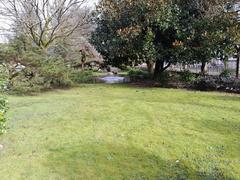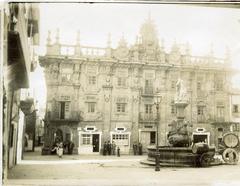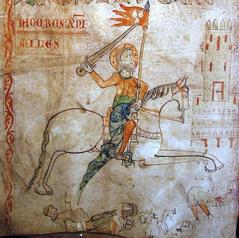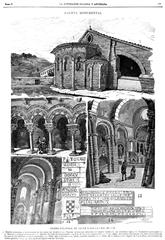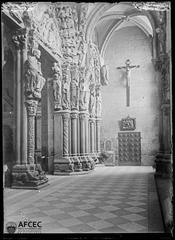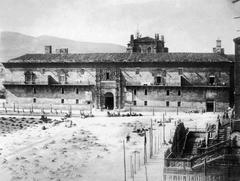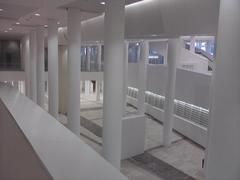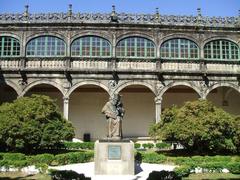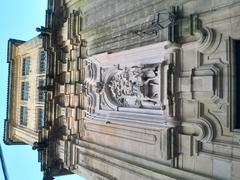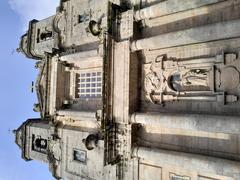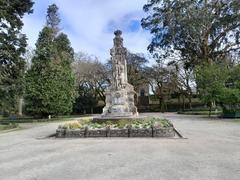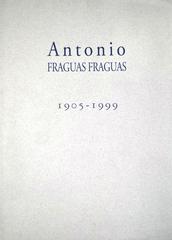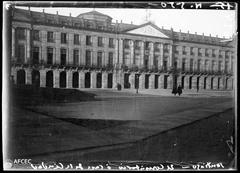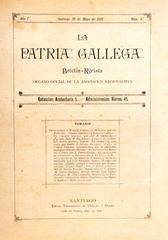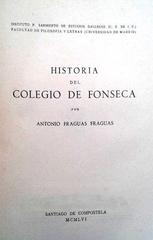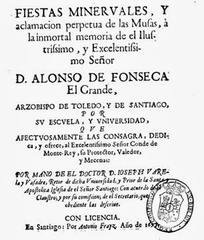Arco de Mazarelos: Visiting Hours, Tickets, and Comprehensive Guide to Santiago de Compostela’s Medieval Gateway
Date: 04/07/2025
Introduction
The Arco de Mazarelos is an evocative symbol of Santiago de Compostela’s medieval heritage, standing as the sole surviving gateway of the city’s once-mighty defensive walls. Seamlessly blending history, architecture, and cultural significance, the arch not only provides a tangible link to Santiago’s storied past but also serves as a vibrant urban space for locals and visitors alike. This guide delivers detailed insights on the arch’s origins, architectural features, cultural legacy, visitor information, travel tips, and its enduring role within the broader tapestry of Santiago de Compostela’s historical sites. For further details, consult trusted resources like Turismo de Galicia, Spain.info, and Google Arts & Culture.
Table of Contents
- Introduction
- Historical Background and Significance
- Architectural Features and Preservation
- Role in the Camino de Santiago
- Visitor Information: Hours, Tickets, Accessibility
- Travel Tips and Nearby Attractions
- Cultural Events, Daily Life, and Educational Value
- Conservation and Restoration
- Frequently Asked Questions (FAQ)
- Tips for a Memorable Visit
- Conclusion and Further Resources
- References
Historical Background and Significance
Constructed primarily between the 11th and 15th centuries, the Arco de Mazarelos was one of several gates that punctuated the formidable walls encircling medieval Santiago de Compostela (Spain.info). These defensive structures were essential for protecting the city, controlling commerce, and regulating the flow of pilgrims. The Arco de Mazarelos, located at the city’s eastern edge, was the principal entry point for travelers from Ourense and the interior of Galicia, linking Santiago to important trade and pilgrimage routes (Galicia Travels).
As the only gateway to withstand the city’s modernization and expansion—most walls and gates were dismantled between the 18th and 19th centuries—the Arco de Mazarelos is a rare remnant of Santiago’s fortified past. Historical records, including the 12th-century Codex Calixtinus, highlight the gate’s significance as a ceremonial entry for wine shipments and pilgrims, underlining its dual role in the city’s religious and economic life (es.wikipedia.org).
Architectural Features and Preservation
The Arco de Mazarelos is a robust, semi-circular granite structure that exemplifies Galician Romanesque and early Gothic military architecture (Google Arts & Culture). The archway, constructed of meticulously cut granite blocks, features a semicircular or slightly pointed arch, supported by massive piers—one of which retains the foundations of a former defensive tower. While the design is austere, its craftsmanship is evident in the precision of the masonry and the monument’s enduring solidity.
Restoration and conservation efforts have been ongoing, guided by advanced technologies such as laser scanning and 3D modeling (elcorreogallego.es). Recent initiatives have focused on cleaning, removing invasive vegetation, and reinforcing structural integrity, all overseen by the Consorcio de Santiago. The arch’s continued maintenance is central to its status as part of Santiago’s UNESCO World Heritage designation.
Role in the Camino de Santiago
For centuries, the Arco de Mazarelos was the gateway for pilgrims arriving from the southeast along the Vía de la Plata and other routes (Evendo). Passing through this arch marked the culmination of arduous journeys and the beginning of spiritual rewards in the city’s heart. Today, while most pilgrims enter Santiago by other routes, the arch remains a powerful symbol of welcome and achievement, reinforcing Santiago’s identity as a city of pilgrimage, faith, and hospitality.
Visitor Information: Hours, Tickets, Accessibility
Location: Praza de Mazarelos, eastern edge of Santiago’s historic center, near the University and Mercado de Abastos.
Visiting Hours:
- Open-air monument, accessible 24/7; daylight hours are recommended for safety and optimal viewing.
Tickets:
- No tickets or entrance fees are required.
Accessibility:
- The site is pedestrian-friendly, with paved and gently sloping streets. Some nearby cobblestone surfaces may pose challenges for those with limited mobility, but the plaza itself is generally accessible.
Etiquette:
- Respect the historic monument; do not climb or damage the arch. Photography is permitted, but check for restrictions on tripods or drones.
Travel Tips and Nearby Attractions
- Best Time to Visit: Early mornings and late afternoons provide softer light for photography and quieter surroundings.
- Getting There: Easily reached on foot from the city center or main tourist office. Public transportation and taxis serve the area.
- Nearby Attractions:
- Mercado de Abastos: Lively market with local produce and foods.
- University of Santiago de Compostela: Historic campus and church.
- Cathedral of Santiago de Compostela: UNESCO World Heritage Site and pilgrimage destination.
- Convento de las Mercedarias Descalzas: Baroque convent close by.
- Plaza de Abastos & Monastery of San Martín Pinario: Major cultural and architectural landmarks.
- Dining and Accommodation: The area features cafés, restaurants, and the Hotel Arco de Mazarelos for those wishing to stay nearby.
Cultural Events, Daily Life, and Educational Value
The Praza de Mazarelos is a lively urban space, animated daily by university students, locals, and visitors. The arch frequently features in local events such as traditional Galician festivals, open-air concerts, and processions (Evendo). Educational tours and interpretive signage at the site provide historical context, making the monument a focal point for school programs, heritage trails, and in-depth city tours (Galicia Travels).
Conservation and Restoration
Ongoing conservation is overseen by the Consorcio de Santiago, with recent investments supporting cleaning, vegetation removal, and structural reinforcement (elcorreogallego.es). Restoration efforts balance the need for authenticity and public access with advanced diagnostic tools, ensuring the arch’s enduring presence for future generations.
Frequently Asked Questions (FAQ)
Q: What are the visiting hours for Arco de Mazarelos?
A: The site is open 24/7 as an open-air monument; visiting during daylight is recommended.
Q: Is there an entrance fee or tickets required?
A: No, admission is free and no ticket is required.
Q: Are guided tours available?
A: Yes, many local walking tours include the Arco de Mazarelos. Booking in advance is suggested during busy periods.
Q: Is the site wheelchair accessible?
A: The plaza is accessible, but some adjacent cobblestone areas may be uneven. Check with local tourist offices for assistance.
Q: Can I take photographs at the site?
A: Yes, photography is permitted. Special permission may be required for tripods or drones.
Tips for a Memorable Visit
- Join a Guided Tour: Gain deeper insights by joining a heritage walk covering the arch and other historic sites (engelvoelkers.com).
- Explore Local Culture: Visit nearby markets, cafés, and cultural venues to experience Santiago’s vibrant street life.
- Check Restoration Updates: Consult official tourism websites for information on any ongoing works that might impact access or appearance.
- Respect Local Traditions: Santiago is rich in religious and academic customs—dress modestly and be considerate during festivals and ceremonies.
Conclusion and Further Resources
The Arco de Mazarelos stands as an enduring testament to Santiago de Compostela’s layered history—bridging the medieval and modern, the sacred and the civic. Free to visit and centrally located, it offers a compelling window into the city’s architectural evolution and cultural vitality. To enhance your experience, explore related historic sites, join guided tours, and utilize digital resources such as the Audiala app for audio guides and real-time updates.
Plan your visit today and immerse yourself in the history, architecture, and living heritage of Santiago de Compostela through the Arco de Mazarelos.
References
- Turismo de Galicia
- Spain.info
- Google Arts & Culture
- elcorreogallego.es
- Galicia Travels
- Evendo
- engelvoelkers.com
- es.wikipedia.org
For further exploration, consider browsing virtual tours or downloading high-resolution images with descriptive alt text (e.g., “Arco de Mazarelos granite arch in Santiago de Compostela”) to enhance your understanding and enjoyment of this historic gateway.
